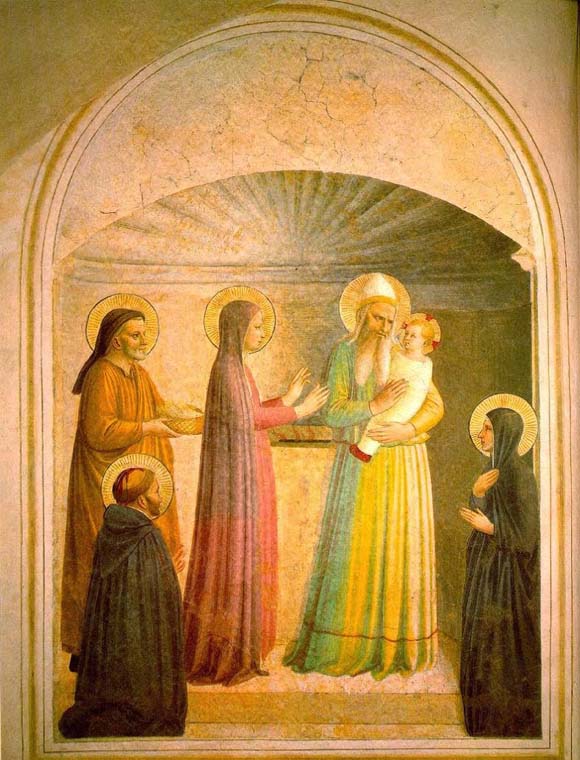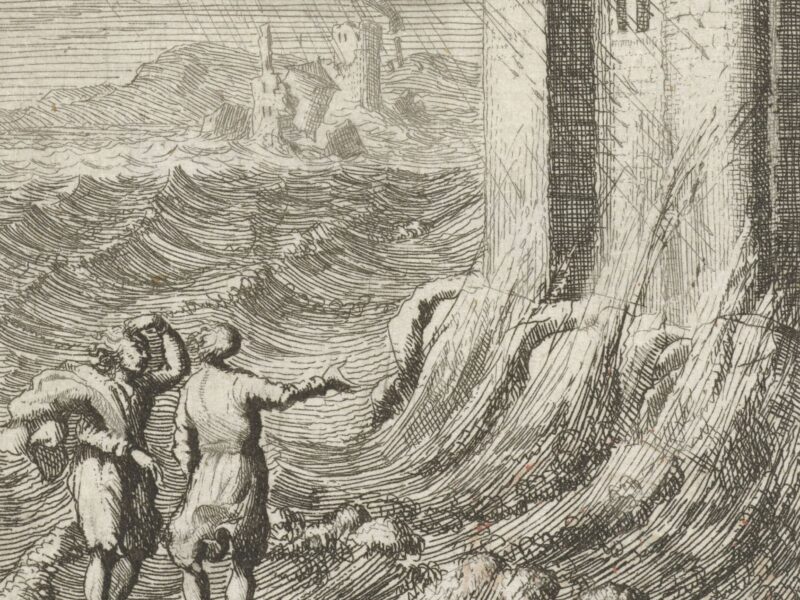
The Presentation of Christ in the Temple
4.28k
For today’s feast, the Blackfriars schola has recorded the ‘Antiphon & Nunc Dimittis’ by Palestrina.
Tonight, at Mass & Vespers in Oxford, the schola will sing the ‘Nunc Dimittis’ by Josquin.
Today’s feast of the ‘presentation’ of baby Jesus at the Temple marks the end of the infancy narratives in the Gospel of Luke:
And when they had performed everything according to the law of the Lord, they returned into Galilee, to their own city, Nazareth. And the child grew and became strong, filled with wisdom; and the favor of God was upon him. (Luke 2:39-40)
We next hear of Jesus returning to the Temple as a twelve-year-old boy, teaching the teachers of the Law, and then there is no further report until his public ministry begins, aged thirty. So this passage marks the end of one important stage in Jesus’s life – his infancy – and the beginning of another – his childhood and adolescence. Standing at this juncture, the Presentation is clearly a ‘rite of passage’.
Last September, when I was teaching some Year 6 pupils at St Dominic’s school in our London parish, as part of our ‘Pray4’ mission week, I drew some parallels between the Presentation and our Christian rites of passage, such as Baptism. St Luke is at pains to stress the punctilious religious observance of Mary and Joseph. They take him to the Temple in Jerusalem, forty days after his birth, as the Law of Moses required. He is ‘redeemed to the Lord’, as the firstborn male child. His family is too poor to afford a lamb for the sacrifice, so they offer two turtledoves or pigeons (see Lev. 12:8). All of this was fairly standard practice for Jews living near Jerusalem, two thousands years ago.
 |
| Aert de Gelder, Simeon’s Song of Praise |
The theme at St Dominic’s school was ‘New Beginnings’, and it’s easy to see how the presentation of a child is a wonderful moment of genesis. God is thanked for giving life to the child, an event which heralds a brighter future.
But the presentation of Jesus is unique, marked as it is by the strange witness of two old prophets in the Temple, Simeon and Anna. At a time of feverish expectation of the promised Messiah, their gift of prophecy (which was supposed to have ended with the Old Testament figures) would have been interpreted as a sign of the saviour’s imminent arrival. When I think of Simeon and Anna faithfully living out their religious vocations in the Temple, year in, year out, this Psalm verse springs to mind:
There is one thing I ask of the Lord,
for this I long,
to live in the house of the Lord,
all the days of my life,
to savour the sweetness of the Lord,
to behold his temple (Ps. 27:4).
These two extraordinary figures were richly rewarded for their fidelity. They savoured the sweetness of the Lord as they beheld the living Temple which is Christ (cf. John 2:19). They saw the wonderful new beginning which God had long been preparing in Israel; the dawn of a new covenant was breaking. This Messiah would bring light, not only to the chosen people Israel, but even to all the nations. The joy and peace of God, which had been announced at Christmas, was now confirmed by Simeon to be a gift to every human being, regardless of origin or ability. In our own particular way of life, we can all behold Christ and love Christ.
 |
| Fra Angelico OP, The Presentation |
And yet, this feast is tinged with sadness, too. The mission of Christ will only be achieved through great suffering and division, and his mother Mary would not escape these sorrows which would take her to the very foot of the Cross. Simeon and Anna must also feel pangs of sorrow even in this moment of joy. For God’s arrival in their midst is the sign that their time is up. At last, all-powerful Master, you give leave to your servant to go in peace, according to your promise. (Luke 2:29) These prophets teach us to meet new beginnings in hope, but also to accept faithfully the terminations and the losses.
The song of Simeon, the Nunc Dimittis, is sung every night at Compline. It is an appropriate expression of Christian confidence in God at the end of the day, as it was at the end of Simeon’s life. If we make it our own prayer, we will learn to see the light of Christ as clearly as Simeon and Anna did, and we will bring that light to those around us.
Nunc dimittis servum tuum, Domine,
secundum verbum tuum in pace:
Quia viderunt oculi mei salutare tuum,
quod parasti ante faciem omnium populorum:
Lumen ad revelationem gentium,
et gloriam plebis tuæ Israel.
At last, all-powerful Master,
you give leave to your servant to go in peace,
according to your promise.
For my eyes have seen your salvation,
which you have prepared for all nations,
the light to enlighten the Gentiles
and give glory to Israel, your people (Luke 2:29-32).
Sorry, the comment form is closed at this time.



A Website Visitor
Thank you for y our words. I find them very inspirational.
A Website Visitor
Matthew Jarvis, My name is Cindy Jarvis. I am a Presbyterian minister in Philadelphia who is preaching on the Presentation of the Lord this Sunday. I have spent two sabbaticals in Florence studying the Fra Angelico frescoes in San Marco Cloisters as well as getting to know the history of your order. I am close to retirement and planning to complete a book of personal theological essays that take the frescoes in the cells as my muse for reflecting on ministry and theology. When I saw your name, though this blog was written a number of years ago, I had to write and thank you! Perhaps we are related by blood as well as by baptism!!
A Website Visitor
Thank you for your message, Cindy, and greetings from a fellow Jarvis in England! I’m glad you came across our blog and I wish you well in completing your book. The Fra Angelico frescoes certainly invite a lifelong reflection on the mysteries of Christ. Belated happy feast of the Presentation of the Lord!